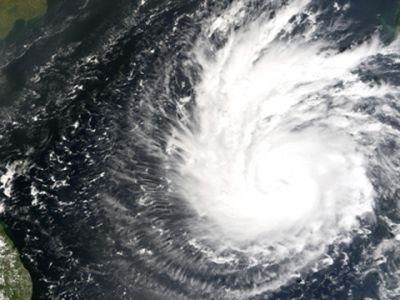Sidr

Sidr the strongest of the cyclone ever formed in the Bay of Bengal. Sidr formed in the central Bay of Bengal and quickly strengthen to reach peak 1-minute sustained winds of 260 km/h (160 mp/h), which made it a Category-5 equivalent tropical cyclone on the Saffire-Simpson Scale. The storm eventually hit the coastal areas of Bangladesh on November 15, 2007. Coastal districts of Bangladesh faced heavy rainfall as an early impact of the cyclone. Dhaka and other parts of Bangladesh experienced drizzle and gusty winds. Storm surges reaching up to a height of 3 metres (9.8 ft) were reported in the coastal areas of north Chennai in southern state of Tamil Nadu in India. The damage in Bangladesh was extensive, including tin shacks flattened, houses and schools blown away and enormous tree damage. The entire cities of Patuakhali, Barguna and Jhalokati district were hit hard by the storm surge of over 5 meters (16 ft). About a quarter of the world heritage site Sunderbans were damaged. As per report of the researchers, mangrove forest Sunderban will take at least 40 years to recover itself from this catastrophe. Much of the capital city of Dhaka was also severely affected, as electricity and water service were cut and significant damage was reported there due to winds and flood. At least 3,447 deaths have been reported.
Over 3,000 fishermen were reported missing on over 500 fishing boats. Sidr may be the strongest cyclone to hit the country since a cyclone killing over 143,000 Bangladeshis in 1991. After the storm, 18 Bangladesh Air Force helicopters and five Bangladesh Navy ships were immediately dispatched with food, medicine, and relief supplies for the hardest-hit areas. The Ministry of Food and Disaster Management allocated 4,000 metric tonnes of rice, 7,500 tents, 18,000 blankets, and 30 million taka as relief grants. About 13,000 housing packages, consisting of iron sheets for roofing and family kits were prepared for immediate distribution. A special grant of 350 million taka for housing was made by 22 November' 2007. At that time, 732 medical team were deployed to the affected areas.
'International communities had extended their helping hands towards Bangladesh during this disaster. People of the cyclone affected area experienced severe health problems such as diseases like diarrhoea, jaundice, typhoid' and pneumonia which spread due to shortage of pure drinking water. The landfall of Sidr had followed the devastation caused by consecutive floods earlier in 2007. In fact the complete recovery of the damages caused by Sidr is yet to be achieved. [Sanzida Murshed]
